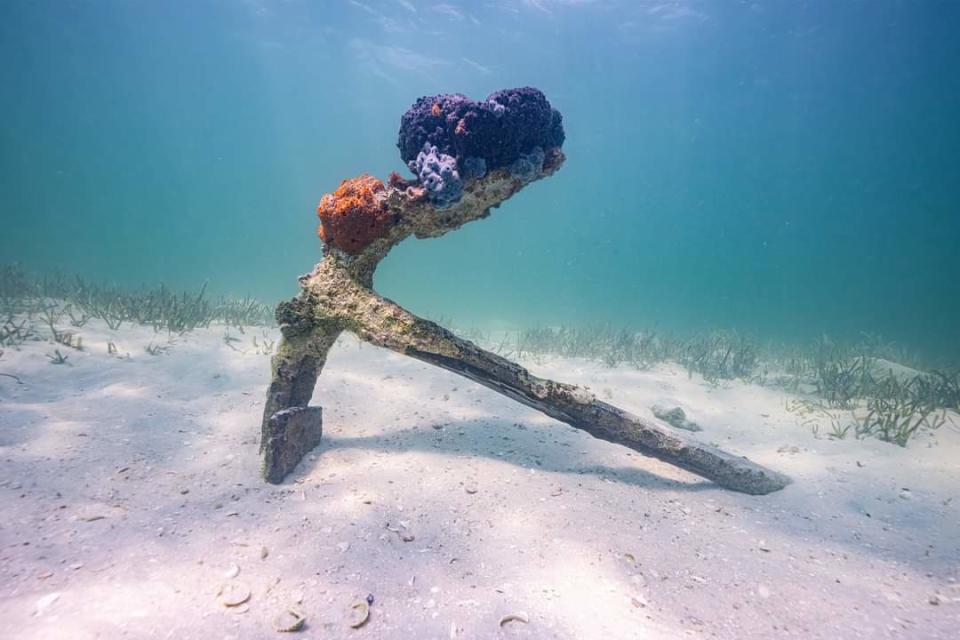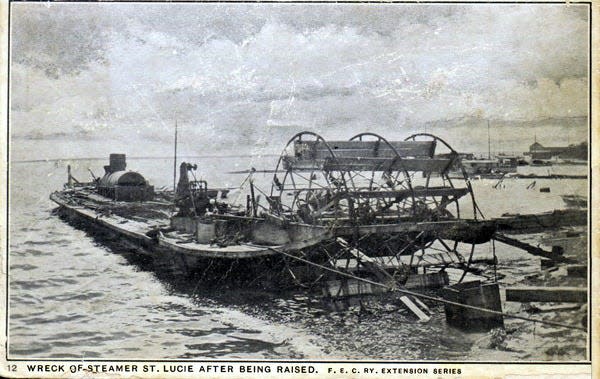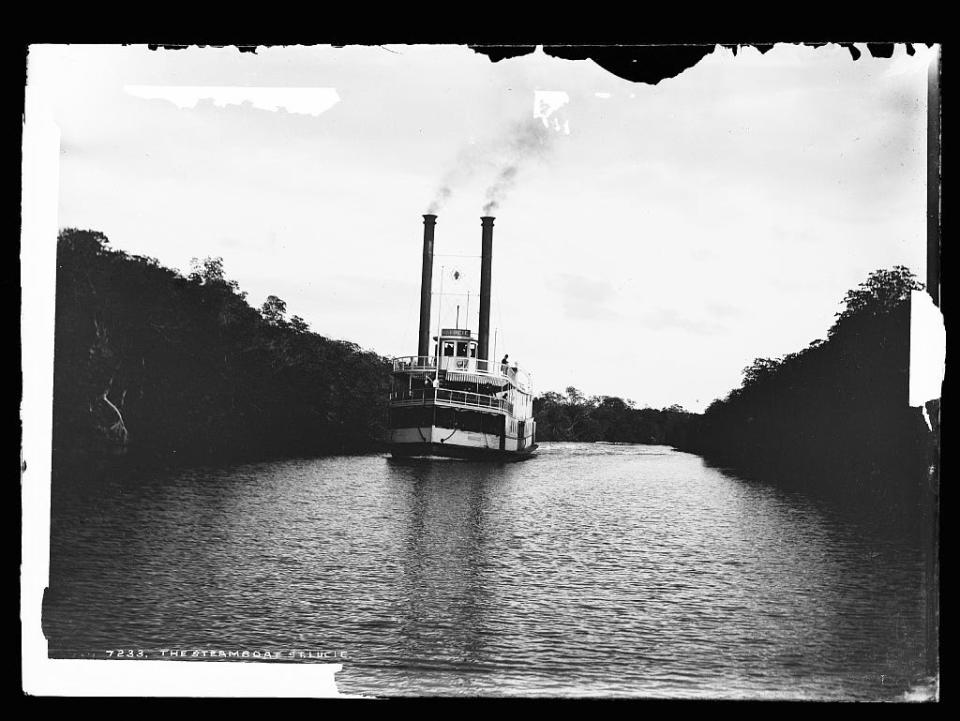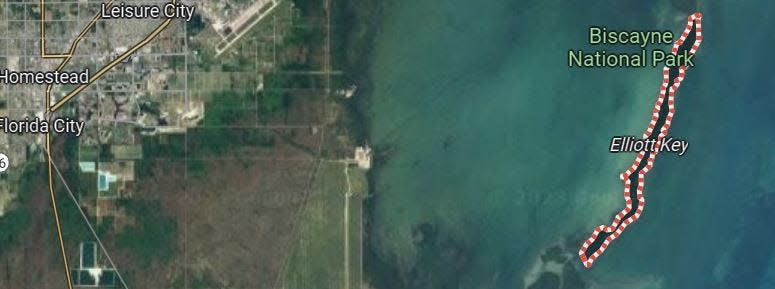Found: Florida shipwreck lost in 1906 hurricane in Biscayne Bay had Treasure Coast ties
An anchor and chain belonging to the steamboat St. Lucie, lost during a 1906 hurricane, were located in Biscayne National Park in July by a maritime archaeologist, his team — and a sea turtle.
History tells us 26 lives were lost when the large 19th century paddle wheeler carrying 100 passengers went down in the shallow bay during a hurricane on Oct. 18, 1906. Lost to history had been the exact location of the St. Lucie's sinking.
Until now.

Steamboat St. Lucie served lagoon
The St. Lucie was a three-deck, 122-foot-long stern paddle wheeler built in Delaware in 1888. It carried passengers and cargo up and down the Indian River Lagoon for Treasure Coast pioneers in the 1890s. It routinely stopped at long docks extending into the lagoon between Titusville and Jupiter. It was how fish, pineapples, citrus, lumber and more were moved before the railroad became the preferred method of transportation along Florida's Atlantic Coast.
After serving the lagoon-side communities for a decade, the boat was bought in the early 1900s by Henry Flagler's Florida East Coast Railway to help build Miami and the railroad that eventually would reach Key West, according to the St. Lucie Historical Society.
How did the steamboat sink?

The vessel sunk while traveling between Miami and Knights Key in the Florida Keys.
As an approaching hurricane worsened, St. Lucie's skipper Capt. Steve Bravo tucked in along the shoreline behind Elliott Key and deployed several anchors to hold position during the storm, according to an article by the National Park Service. However, the boat probably swung in the winds and waves and eventually capsized and sunk in 13 feet of water.
Laborers and their families were tossed into the storm-tossed waters. Many were able to swim to safety to the shoreline nearby, but 26 lost their lives in the tragedy.
Is the shipwreck still there?

The steamboat's hull was raised from the shallow waters in 1907 and the boat was restored. It rejoined the fleet of eight steamboats working for the railroad company in South Florida ferrying laborers and supplies for the next several years.
Since the boat was raised, all that remains at the wreck site is the anchor and some chain, maritime archaeologist Joshua Marano told WLRN.
Marano's team continues to work on trying to discover where the victims of that tragic night are buried. They know 21 bodies were recovered, 13 of their final resting places have been located. They believe some of the remainder — Black laborers or their family members — are interred in two mass graves in the then-segregated Miami City Cemetery, the national park article states.
Can the shipwrecks be visited?

The artifact was discovered while Marano and two interns were investigating some of the 80 known shipwreck sites in the bay. That's when Marano saw a sea turtle behaving unusually. He moved closer to see why and saw something. The St. Lucie's anchor chain pointed to the anchor, close to where the turtle had been.
Marano was working with the Smithsonian National Museum of African American History and Culture’s Slave Wrecks Project.
Because the anchor is large and would cost too much to raise and preserve, it will remain in its resting place, monitored occasionally by Biscayne National Park staff. The park is working on preparing a digital interpretation and 3D rendering to be included on its website.
At all national parks, submerged cultural heritage is protected under Federal law.
Archaeologists are working with several stakeholders, including the St. Lucie Historical Society, city of Miami and Florida East Coast Railway to learn more about the victims, the steamboat and the early development of South Florida.
Steamboat St. Lucie
Length: 122 feet
Beam: 24 feet
Decks: 3
State rooms: 14
Passenger capacity: 150
Cargo: Pineapples, fish, lumber, citrus, construction supplies
Draft: 35 inches
Power: Steam
Locomotion: Stern-mounted paddle wheel
Top speed: 10.5 knots
Cost: $30,000
Year built: 1888
Place built: Wilmington, Delaware
Owner: Indian River Steamboat Co.; Florida East Coast Railway
Captain: Steve Bravo
Source: "When Steamboats Reigned in Florida" by Bob Bass 2008
Ed Killer covers the outdoors for TCPalm. Email him at ed.killer@tcpalm.com.
This article originally appeared on Treasure Coast Newspapers: St. Lucie shipwreck found in Biscayne Bay near Miami

